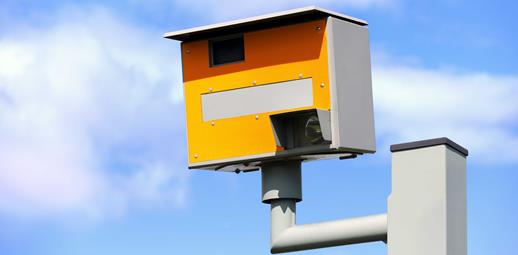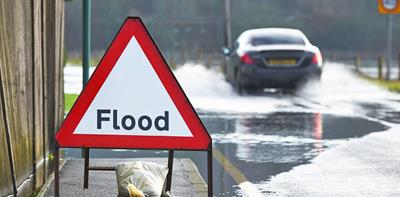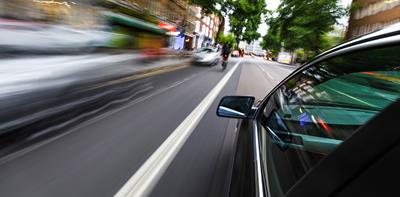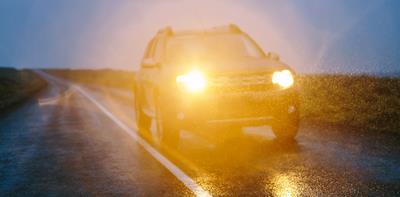
You might be wondering how to get a speed camera installed if you're worried about road safety and people driving too fast in your community.
Speed enforcement cameras can effectively reduce speeding and related crashes and injuries. Find out how to request a speed camera in our detailed guide.
EASY AS HACK
Start the process of getting a speed camera installed by contacting your local authority.
At a glance
There are around 20 types of speed camera in use on UK roads, including:
- Fixed cameras like the ‘Gatso’
- Mobile speed vans
- Average speed cameras (ANPR) like SpeedSpike
- SR cameras on smart motoways
- Mobile police cameras
- VECTOR-SR roadside cameras
- HADECS motorway speed cameras
- SPECS cameras
- Long ranger cameras
- Hand-held speed guns
different types of speed cameras
Not all speed cameras are alike. The different kinds include:
- Fixed cameras – the classic boxy contraptions, usually grey or blue and yellow, which are permanently positioned on a roadside.
- Mobile cameras – these devices are operated from inside police cars and vans, or as handheld radar or laser guns. They regularly change location, usually based on local accident data.
- Average speed cameras – these cameras work in pairs to calculate a vehicle’s average speed. Often mounted on motorway gantries, they use automatic number recognition to calculate the time it takes a car to travel between cameras, and hence its speed.
how do speed cameras work?
Conventional average speed cameras use automatic number plate reading technologies to record your speed between 2 points on a road.
They take two pictures to establish how long you took to drive between the points, and images of your vehicle number plate. They’ll also record the time and day of the offence. The newest cameras can also take images of the driver and front passenger.
Common speed cameras
The standard ‘Gatso’ speed camera seen across the UK is digital and uses radar to measure vehicles’ speed. You’ll know it has taken a picture of you exceeding the speed limit when its flashlight goes off.
Motorway cameras
Other cameras you see overlooking motorways take an image of the vehicle’s number plate and measure the average speed. They do not flash visibly, unlike the Gatso.
Mobile cameras
Then there are mobile cameras with lasers that the police use from inside a police van or handheld along the roadside to aim at a vehicle and record the registration number.
AI cameras
The government has also introduced new AI-powered technology mounted to vans or gantries to catch speeding drivers by tracking vehicle number plates, analysing data, and applying penalties in real time.
These devices can also scan people inside the vehicle to see if they are using a mobile phone, failing to wear a seatbelt or running a red light.
who is in charge of speed cameras?
Deciding to install a speed camera is down to the police, local government, the Highways Agency and health authorities. They work together to identify dangerous sites where speed cameras could help improve road safety.
There are some government guidelines to help with these decisions. To install a speed camera, certain conditions should be met, including that at least 20% of drivers exceed the speed limit at the site.
Also, accident history records should show that there is a serious crash risk on that stretch of road. There must have been at least two collisions resulting in people killed or seriously injured per kilometre in the past three years.
Public opinion and any community concerns about safety on a particular stretch of road should also feed into the decision about whether a speed camera is needed.
The decisions on where to put average speed cameras will be slightly different. You’ll often see them where there are roadworks with temporary lower speed limits, to keep road workers safe. But they’re not just used on fast roads – you can also see them on urban 30mph and 40mph routes.
Speed cameras are usually cheaper to install than alternative traffic calming measures, such as bumps, bollards and chicanes. The money collected from speeding fines goes into central government fund, rather than to local councils.
how can i request to have a speed camera installed?
If you’re concerned about people breaking the speed limit in your area, including near your property, you can request to have a speed camera installed.
- Use a search engine to contact your road and highways team, part of your local council. They work in partnership with the neighbourhood police force, which is responsible for enforcing speed limits.
- You can also find information about road safety by visiting uk and find local councils in England and Wales through GOV.UK.
- Formally request that both the police and the local council install a camera, specifying the road where you believe speeding takes place
- Include evidence of accidents or other incidents you have observed – many local councils provide collision and camera maps and road safety data to find danger spots.
Local partnerships between local councils, the police and the Highways Agency decide whether to install a camera depending on specific criteria, including data on accidents in the area and the nature of the road.
how to get traffic to slow down on your street
There are other ways to get traffic to slow down on a street, including:
- Contacting your local council/authority to implement calming measures, such as speed bumps (sleeping policemen), roundabouts, chicanes and built-out kerbs
- Requesting radar speed signs that detect traffic and trigger a sign to show the driver exceeded the speed limit
- Launching a public awareness campaign in your area to strengthen community support for calming measures.
can you request a speed limit change?
Local traffic authorities, such as local councils and London boroughs, are responsible for setting and determining local speed limits.[1] Contact them first if you want to request a speed limit change.
To find your local council and start the process, visit the government website GOV.UK. In Scotland, contact Police Scotland Safety Cameras. In Northern Ireland, make a community concern request through the Police Service of Northern Ireland (PSNI).
National Highways sets speed limits on the major national roads (such as motorways and ‘A’ roads), and the Department for Transport (DfT) sets the framework for them and guides the local authorities.[2]
do speed cameras have to be visible?
No, speed cameras in the UK aren’t legally required to be visible or marked in a specific way. The police can and do hide mobile speed camera vans. However, many manufacturers paint the camera case in yellow to increase visibility.[3]
does speeding affect car insurance?
Getting caught by a speed camera and receiving a speeding conviction can increase your car insurance costs. Penalty points on your licence indicate to insurers you’re a higher risk. You must tell your insurer about any penalty points. Points usually stay on your licence for four or eleven years, depending on the offence, and you’re legally required to disclose them when getting a quote.
Many people who have committed minor speed offences choose to pay for a speed awareness course if the police offer it, as it means you can avoid points being added to your licence.
Find out more about our car insurance.
FAQs
can i drive 10% + 2 above the speed limit and not get caught?
Fixed speed cameras have a set trigger to activate, often based on National Police Chiefs' Council guidelines of 10% plus 2mph over the speed limit, but as this is not the case across all areas of the UK, it’s not worth taking the risk.[3]
when were speed cameras introducted?
In 1992, the first ‘Gatso’ device was installed on the M40, then the A316 over Twickenham Bridge in west London.[4]
how far away can speed cameras catch you from?
The distances at which speed cameras can detect speeding vehicles depend on the type of camera. Fixed cameras, using radar or sensors in the road, are only effective close to the camera itself, while mobile radar guns have a range of about 300 yards (274 metres).
‘Long ranger’ cameras can capture a speeding driver at 0.6 miles (1 kilometre). AI drivers can catch you speeding and scan you sitting inside the vehicle.
how can you tell if a speed camera is working?
You may see a flash from some types of fixed cameras, but many cameras can measure your speed without the need for a visible flash, so there isn’t a way to tell if they are working unless there is a ‘not in use’ sign saying so.
Sources
[1] Setting Local Speed Limits


